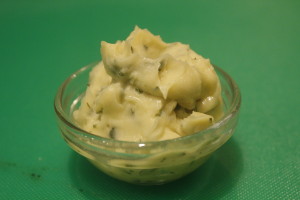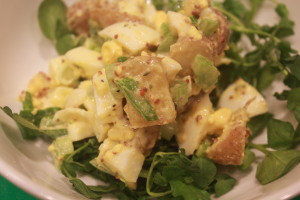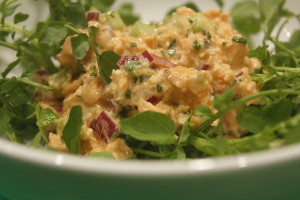
|
Lacto-fermented Mayonaise In today’s Video, I show how to make homemade mayonnaise—two versions, actually— using a combination of oils. Homemade mayonnaise, unlike any that you can purchase, can be a healthful ingredient, a way to get high quality fats into your diet. Besides being made with great oils, these two versions contain a secret ingredient, whey, which keeps them fresh for much longer than the usual homemade versions. The key to a great mayonnaise is to start with good oil. I make my mayonnaise with one cup of oil in total, but I mix a combination of oils to make that one cup. In the video, I show two different combinations. The first one consists of 1/3 aroma-free coconut oil, 1/3 extra virgin olive oil, and 1/3 avocado oil. The second combination of oils include the same amounts of coconut and olive oils, but the avocado oil is replaced with 1/3 cup unrefined sesame oil, a combination inspired by the lipid researcher Mary Enig. Either oil combination has a mild flavor: the aroma-free coconut oil is neutral tasting, so the impact of the stronger flavored oils is diluted. Any one of the oils by themselves would not make a good mayonnaise, but the combinations are synergistic. The results are two delicious mixes containing stable healthful lipids— perfect for sautéing as well as for sauces. Keep these mixes in jars at room temperature to use any time. To make the mayonnaise (also known as an emulsion sauce), start with 1/2 teaspoon Dijon mustard and 2 egg yolks. Whisk these together in a medium bowl, then slowly whisk in the oil. It helps if you anchor your bowl with a wet towel so that both of your hands are free, one to pour and one to whisk. Start slowly; then, as the mixture begins to emulsify, you can pour and whisk faster. You can speed up the process by using a food processor; leave the motor running as you slowly drizzle in the oil. When you’ve worked in all of the oil, add a splash of lemon juice, a sprinkle of salt, and a tablespoon of whey. You make whey by draining full-fat unflavored yogurt in a cheesecloth-lined strainer. The longer you let the yogurt drip, the more whey you’ll have. You’ll also have thick yogurt, and if you leave it to drain long enough (24 hours), you’ll have thick yogurt “cheese.” Transfer the whey to a jar and keep for up to 6 months in the refrigerator. (Use a splash when soaking grains to deactivate mineral-inhibiting phytates.) When you add just a tablespoon of whey to your mayonnaise, it will keep fresh for 2 weeks to a month in the refrigerator. Because of the coconut oil, this mayonnaise also will thicken up beautifully. I add tarragon to the mayonnaise presented in the video, and then I use it to dress two salads. One is a potato salad mixed with hard-boiled eggs, celery, and scallions. The second starts with tinned salmon mixed with red onion, celery, and scallions. Of course, these are just two of the myriad dishes you can whip together quickly with this delicious sauce. You’ll find this mayonnaise as tasty as it is versatile! Share on Facebook and Twitter | Kitchen Tips, techniques | 1 comment
One response to “Lacto-fermented Mayonaise”Leave a Reply
|




HI Myra! I am one of your biggest fans. I have been cooking your recipes for every special occasion since I was 20 and now I am 36. Your applesauce recipe in V.V. has become my family’s Passover staple. At Chanukah we always make your sweet potato-turnip latkes. My family’s favorite birthday cake is your chocolate-hazelnut one from V.V. Today we enjoyed your butternut-lemongrass soup from V.V. for breakfast. My husband asked me, “why is this so delicious?” and I told him it was from your cookbook–ENOUGH SAID. When my husband had to go GF, we discovered your oat-flour brownies in H.H.–thank God! Thank you for being so awesome! Someday I hope to save up enough money to take one of your cooking classes!
Lots of appreciation, Your lifelong fan, Sarah Denes